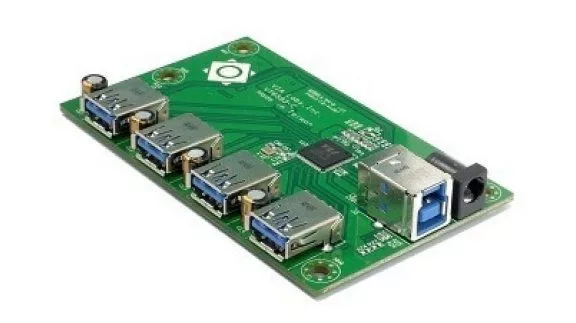Just about all products and projects are fundamentally powered by DC current, even if they are plugged into the wall AC. Inside the lab, and leaving out batteries for portable or short term use, circuits mainly rely on DC sources like: DC Supplies, DC-DC Converters, AC-DC Converters, and wall warts or wall bugs.
Most DC supplies are simply AC/DC converters that are plugged into a power outlet, which outputs 110-220 VAC in most parts of the world, and convert that to 3-5-9-12-24 VDC as needed. They come in many shapes, sizes and types, so here we’ll cover a few of the most common.
1. Wall Wart Power Supplies
Starting with the most basic and usually the cheapest (even to the point of being mostly given away with many products and easily found in yard sales and thrift stores) we have wall bugs/wall warts. They can be considered terrible but also great in their own ways.

They suck because old style ones are bulky and inefficient transformer designs, and dumb ones are “on” all the time, wasting power. They are great because they usually are set in the factory for the voltage and current needed and are forgettable after that. They suck because they come in many voltage and amperage ratings that might not match your needs and they’re completely inflexible. I typically check my box in the garage and find five that won’t work for what I want. They often come with a barrel connector that is never the right size and even worse, always center positive unless it’s not. I have seen a $500 external disk drive fried by reverse polarity on a barrel connector - thankfully, it was against my advice, not my decision, and I didn’t suffer the expensive repercussions. Low power wall warts can be small enough, but for extra power requirements the wall wart becomes large and heavy to the point of blocking adjacent outlets and straining the ability of the plug to hold the weight in the outlet.
2. DC Brick Power Supplies

Similar to wall bugs are the power bricks that come with laptops, gaming systems, and monitors. These typically give 12-24V and 1-10A. I personally have been loving these power supplies for 12-24V random project needs because there are many of them found cheaply at thrift stores when laptops and monitors die. These have some of the same issues with connector size and polarity, and can be set at oddball outputs for specific products. To their advantage they are usually Switch Mode Power Supplies (SMPS) that are lighter, more efficient and more powerful than wall warts.
3. Multiple Output Internal AC-DC Power Supplies

Other power supplies with many levels of output voltage and current can be found that are intended to be mounted internally for computers, consumer products, and industrial applications. These are from many sources like computer power supplies, server power supplies, and things like printers, 3d printers, laser cutters, etc. These are great because they are often built with even better electrical performance, like lower ripple current for example.
4. DC-DC Converter Modules

There are also regulators and buck/boost converters to reduce or increase a voltage from a power supply to the level that you need. DC-DC converters take a typical 1.2-3-12-24V source to 5V or 3.3V for example (or as needed). This happens a lot if your project has a need for higher voltage for powering the drive section (and the requisite large DC supply/battery), but needs 5V or 3.3V for the MCU brain. A robot or automobile is a good example of that.
The DC supplies covered here will cover many projects that require DC power. They come in many forms and types, so there might be several overlapping options that will work for any given output depending on your needs. Bench power supplies are a special case and have been left out, they’ll be covered in another article. Getting to know the capabilities of each type and matching them to your circuits needs is a big step in getting projects up and running.














